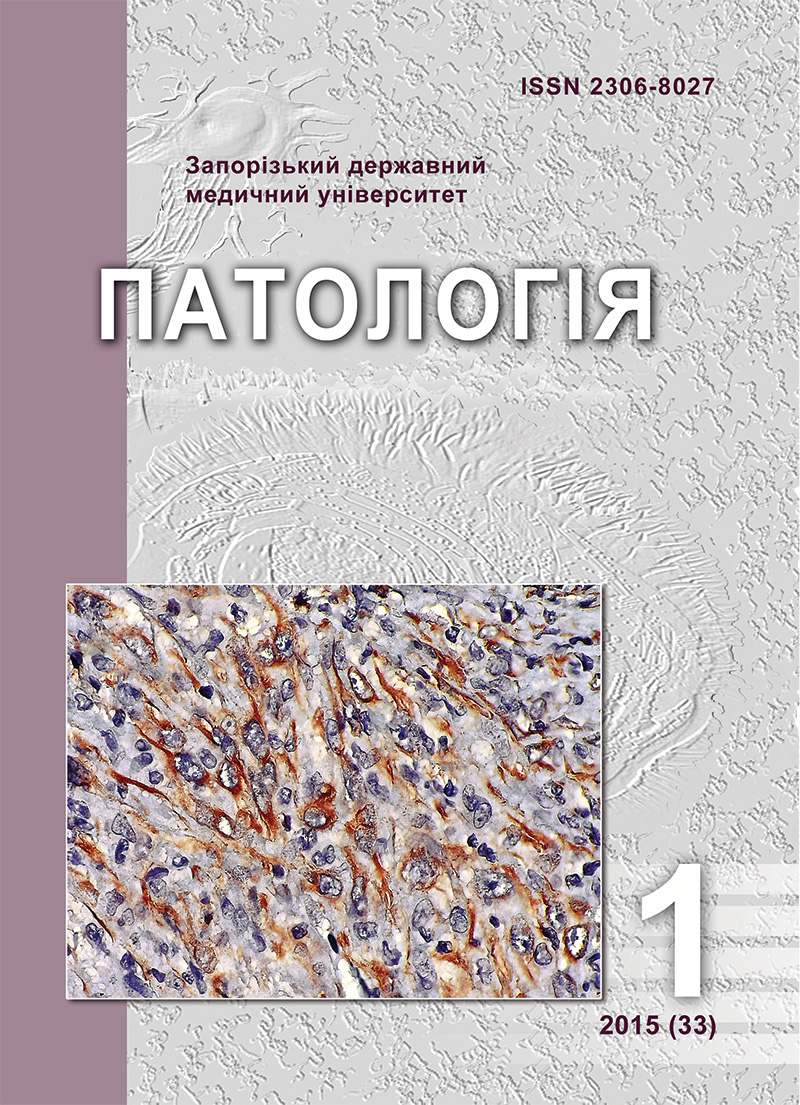Morphological and immunohistochemical peculiarities of placental-endometrial structures in women with benign and malignant tumors
DOI:
https://doi.org/10.14739/2310-1237.2015.1.42879Keywords:
Placenta, Endometrium, Biological Tumor MarkersAbstract
Aim. Researchmaterials were the placenta of women operated on papillary carcinoma (encapsulated), endometrium of women with the same tumor markers detected in the placenta, this endometrium were taken during diagnosing postpartum catamnesis of the state of reproductive health, in comparison to the endometrium of women with benign uterine tumors (leiomyoma).
Methods and results. Methods, that were used in the study: histological, immunohistochemical – indirect streptavidin-peroxidase method for detecting the expression of Ki67 Clon MIB-1, p53 Clon: DO-7, REA, Cytoceratina AE1 / AE3; Vimentin Clone: v9, receptors for estrogen (RE) and progesterone (RP). The study evaluated predictors of placental-endometrial disorders in women with cancer pathology: elevation of relative amount of expression of proliferative marker Ki-67 and p53 tumor marker in the placenta and endometrium, leading to violations in the structure of the process of regeneration; dischronosis in levels of expression of estrogen and progesterone receptors in the endometrium; presence of CEA expression in 25% of women of the main group in the endometrium and placenta; atypical glandular hyperplasia, endometrial polyps and micropolyps were found, which are important in the development of oncologic pathology.
References
Acharya, G., Albrecht, C., Benton, S. J., Cotechini, T., Dechend, R., Dilworth, M. R., et al. (2012) IFPA Meeting 2011 workshop report I: Placenta: Predicting future health; roles of lipids in the growth and development of feto-placental unit; placental nutrient sensing; placental research to solve clinical problems--a translational approach. Placenta, 33, 4–8. doi: 10.1016/j.placenta.2011.11.015
Zadorozhnaya, T.D., Podolsky, V.V., Eshchenko, O.I., Archakova, T.N., Kilikhevich, S.M., Parnitskaya, O.I., Davydova, Yu.V., Grebinichenko, A.A., & Pasechnik, E.A. (2012) Morfologicheskie i immunogistokhimicheskie osobennosti onkomarkerov v placentarnom baryere [Morphological and immunohistochemical peculiarities of oncomarkers in placental barrier]. Patologiya, 1, 38–41. [in Ukrainian].
Zadorozhna, T., Podolsky, V., & Eschenko, O. (2012) Immunohistochemical peculiarities of placental oncomarkers by pathological changes. Placenta, 33(9), 23.
Baergen, Rebecca N. (2011) Manual of Phathology of the Human Placenta. N.Y. : Springer.
Downloads
How to Cite
Issue
Section
License
Authors who publish with this journal agree to the following terms:- Authors retain copyright and grant the journal right of first publication with the work simultaneously licensed under a Creative Commons Attribution License that allows others to share the work with an acknowledgement of the work's authorship and initial publication in this journal.

- Authors are able to enter into separate, additional contractual arrangements for the non-exclusive distribution of the journal's published version of the work (e.g., post it to an institutional repository or publish it in a book), with an acknowledgement of its initial publication in this journal.
- Authors are permitted and encouraged to post their work online (e.g., in institutional repositories or on their website) prior to and during the submission process, as it can lead to productive exchanges, as well as earlier and greater citation of published work (SeeThe Effect of Open Access).

